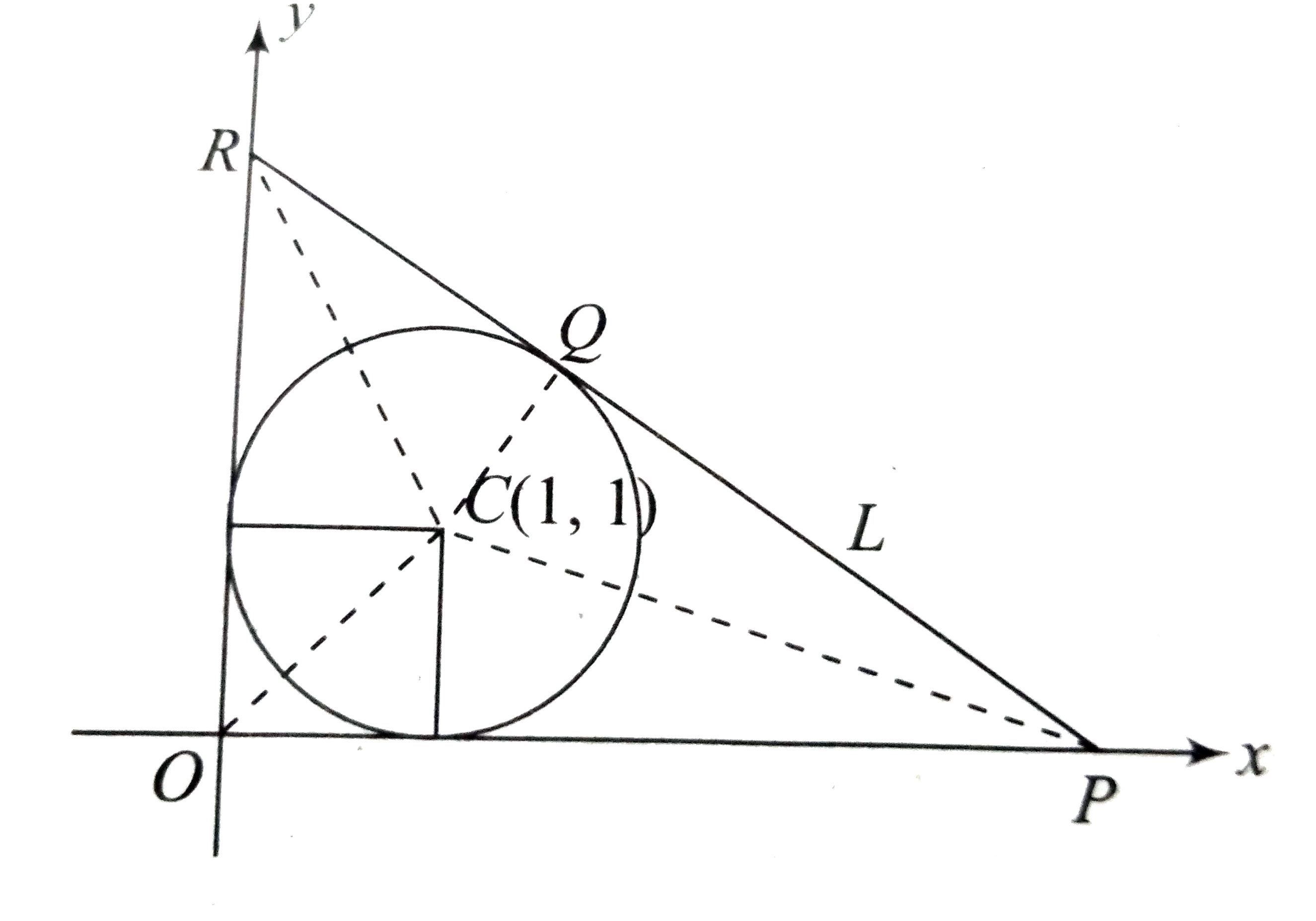If z is a complex number such that |z−¯z|+|z+¯z|=4 then find the area bounded by the locus of z.Solution in Bengali
We have |z−¯z|+|z+¯z|=4
∴ |2iy|+|2x|=4
⇒|x|+|y|=2

This equation forms square with vertices (±2,0) and (0,±2)
so, area of square is 8 sq.units
Topper's Solved these Questions
- COMPLEX NUMBERSBook:CENGAGE PUBLICATIONChapter:COMPLEX NUMBERSExercise:SLOVED EXAMPLES
Explore 15 Videos
- COMPLEX NUMBERSBook:CENGAGE PUBLICATIONChapter:COMPLEX NUMBERSExercise:EXERCISE3.1
Explore 4 Videos
- COMPLEX NUMBERSBook:CENGAGE PUBLICATIONChapter:COMPLEX NUMBERSExercise:Comprehension
Explore 11 Videos
- CIRCLESBook:CENGAGE PUBLICATIONChapter:CIRCLESExercise:Comprehension Type
Explore 8 Videos
- CONIC SECTIONSBook:CENGAGE PUBLICATIONChapter:CONIC SECTIONSExercise:All Questions
Explore 102 Videos
Similar Questions
ifωandω2 are the nonreal cube roots of unity and [1/(a+ω)]+[1/(b+ω)]+[1/(c+ω)]=2ω2 and [1/(a+ω)2]+[1/(b+ω)2]+[1/(c+ω)2]=2ω , then find the value of [1/(a+1)]+[1/(b+1)]+[1/(c+1)].
View SolutionIs the following computation correct? If not give the correct computation: [√(−2).√(−3)]=√(−2).−3=√6
View SolutionConsider the region R in the Argand plane described by the complex number. Z satisfying the inequalities |Z−2|≤|Z−4|, |Z−3|≤|Z+3|, |Z−i|≤|Z−3i|, |Z+i|≤|Z+3i|
Answer the followin questions :
Maximum of |Z1−Z2| given that Z1, Z2 are any two complex numbers lying in the region R is
View Solution
In the diagram as shown, a circle is drawn with centre C(1,1) and radius 1 and a line L. The line L is tangent to the circle at Q. Further L meets the y-axis at R and the x-axis at P in such a way that the angle OPQ equals θ where 0<θ<π2.
Coordinate of Q is
View SolutionGiven that A(1,1) and B(2,−3) are two points and D is a point on AB produced such that AD=3AB. Find the coordinates of D.
View SolutionIf omega is any complex number such that z omega = |z|^2 and |z - barz| + |omega + bar(omega)| = 4 then as omega varies, then the area bounded by the locus of z is
View SolutionIf a complex number z satisfies |z|2+4(|z|)2−2(z¯z+¯zz)−16=0, then the maximum value of |z| is
View SolutionIf ω is any complex number such that zω=|z|2 and |z−¯z|+|ω+¯¯ω|=4, then as ω varies, then the area bounded by the locus of z is
View SolutionIf z is a complex number such that |z−¯z|+|z+¯z|=4 then find the area bounded by the locus of z.
View SolutionIf |z+¯z|=|z−¯z|, then value of locus of z is
View Solutionमाना z एक सम्मिश्र संख्या है, तब z+¯z है:
View SolutionIf ∣∣z+¯b∣∣=|z−¯z| , then the locus of z is
View SolutionIf |z+¯z|+|z−¯z| , then the locus of z is
View SolutionIf a complex number z satisfies |z|2+4(|z|)2−2(z¯z+¯zz)−16=0, then the maximum value of |z| is
View SolutionIf ω is any complex number such that zω=|z|2 and |z−¯z|+|ω+¯¯ω|=4, then as ω varies, then the area bounded by the locus of z is
View SolutionIf z is a complex number such that |z−¯z|+|z+¯z|=4 then find the area bounded by the locus of z.
View Solution
